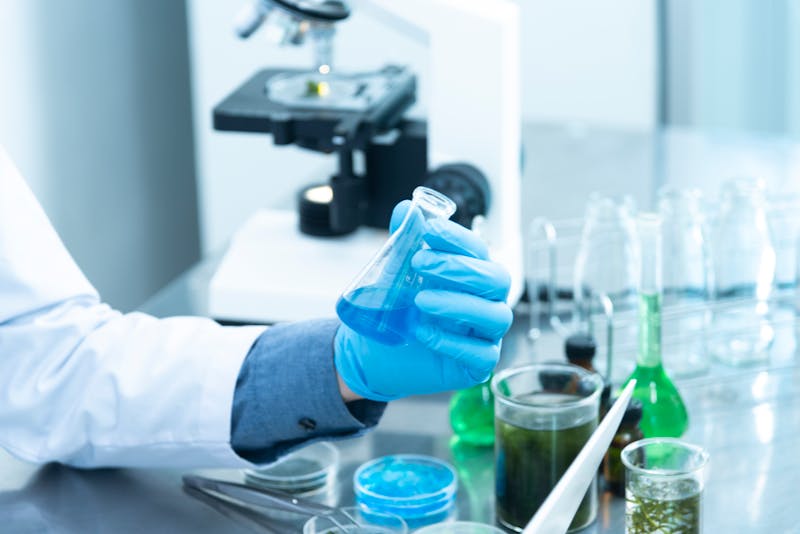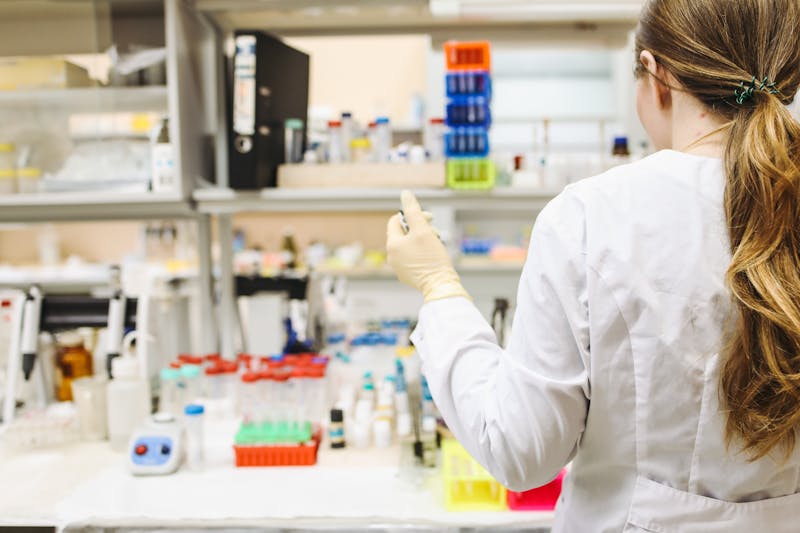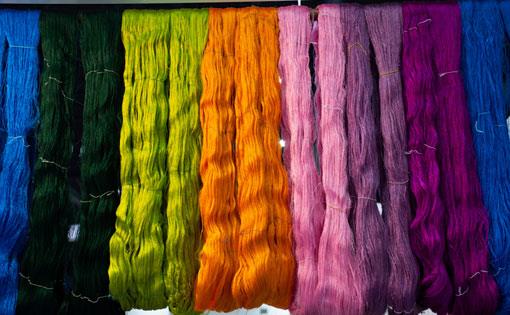
Vat Dyes
Vat dyes are water-insoluble dyes that undergo a reduction process to become soluble in their leuco form, allowing them to penetrate cellulose fibers effectively. Once applied, the dyes are oxidized back to their original insoluble form within the fiber, ensuring exceptional color durability and fastness properties. Known for their brilliant shades and high resistance to washing and light, vat dyes are predominantly used on cotton, viscose, and other cellulosic textiles in industrial applications.
| Property | Chemical Details | Application Info | Compatibility | Fastness | Standards & Storage |
|---|---|---|---|---|---|
| Product Type | Vat Blue 66 | Anthraquinone-based vat dye | Cotton, Linen, Viscose | Wash: 5 Light: 7–8 |
Store in dry, sealed containers |
| Molecular Structure | C.I. Vat Blue 66: C29H16N2O8 | Insoluble in water, reduced to leuco form | Cellulosic fibers | Bleach Resistance: High | Shelf Life: 2 years in cool, dark place |
| Fixation Type | Oxidation after reduction | NaOH + Sodium Hydrosulphite used | Strong bonding after oxidation | Rubbing Fastness: 4–5 | GOTS / ZDHC Compliant |
| Temp. Requirement | 50°C – 60°C | Ideal for exhaust vat dyeing | Jet dyeing, jigger & soft flow compatible | Heat Stability: Excellent | Protect from moisture & light |
| Application Segment | Denim, Workwear, Home Textiles | Exhaust, Pad, Cold Pad Batch | Fabrics needing high fastness | Durability: Very High | Pack in inert moisture-proof bags |
| Solubility & Form | Powder/Paste (Insoluble) | Reduced to leuco state before dyeing | Requires alkaline & reducing agents | Bath Stability: High when reduced | Avoid temperatures below 5°C |
| Product Name | Chemical Class | Dyeing Temp (°C) | pH Range | Fixation Method | Common Applications |
|---|---|---|---|---|---|
| Vat Blue 66 | Anthraquinone Vat Dye | 60 – 70 | 11.0 – 12.0 | Reduction (NaOH + Hydros) | Denim, heavy fabrics |
| Vat Green 1 | Indigoid Vat Dye | 50 – 60 | 11.5 – 12.5 | Reduction + Air Oxidation | Garments, cotton blends |
| Vat Violet 13 | Dibenzoanthrone Derivative | 55 – 65 | 11.0 – 12.0 | Hydros + Caustic Soda | Apparel, fancy shades |
| Vat Orange 7 | Anthraquinone Base | 50 – 60 | 11.0 – 11.5 | Sodium Dithionite + Alkali | Workwear, uniforms |
| Vat Yellow 33 | Perylene-Based Vat Dye | 60 – 70 | 11.5 – 12.0 | Hydrosulphite Reduction | Yarn dyeing, outerwear |
| Vat Black 27 | Complex Indigo Derivative | 60 – 70 | 11.5 – 12.5 | Hydros + NaOH Fixation | Denim, industrial textiles |
Vat dyes are a specialized class of water-insoluble dyes known for their exceptional fastness properties and are primarily used in the dyeing of cellulosic fibers such as cotton, linen, and viscose. These dyes undergo a unique reduction–oxidation dyeing process, wherein the insoluble dye is first reduced to a soluble leuco form, applied to the fabric, and then oxidized back to its insoluble form, ensuring deep penetration and high durability of color.
From a chemical engineering perspective, vat dyes require a reducing environment using sodium hydrosulfite and caustic soda, typically operating at pH levels between 11.0 to 12.5 and temperatures ranging from 50°C to 70°C. Application methods include exhaust dyeing, jig dyeing, and continuous pad dyeing. Vat dyes are extensively used in industrial textiles, denim, and workwear due to their superior resistance to washing, light, and bleaching agents — making them ideal for demanding end-use applications.
Proper storage of vat dyes is critical — they must be kept in sealed containers away from moisture, heat, and direct sunlight to maintain their shelf life of up to 2 years. Many commercial vat dyes conform to international environmental and safety standards such as REACH and OEKO-TEX, making them suitable for sustainable production. Chemical engineers play a key role in controlling reduction-oxidation balance, optimizing dye liquor conditions, and improving efficiency, thereby ensuring color consistency and minimal environmental impact in vat dyeing processes.
Our Lab Gallery



If you would like to get in touch with JP Global, there are several convenient ways to reach out. You can contact us directly via phone or email for any inquiries, partnerships, or support. Additionally, our contact form on the website allows you to submit your queries quickly. For urgent matters, we recommend calling during business hours. Follow us on social media for updates, or visit our office at the listed address to speak with our team in person.
You can view the complete list of our products by visiting the "Products" or "Catalog" section on our website. We regularly update this section with the latest offerings, specifications, and availability. If you prefer, you can also request a digital or printed catalog by contacting our support team via email or phone. For bulk or customized product inquiries, our sales team is always ready to assist you directly.
JP Global collaborates with a wide range of trusted industrial partners across various sectors including manufacturing, logistics, energy, and technology. Our key partners include leading suppliers, global manufacturers, and certified service providers who share our commitment to quality, innovation, and customer satisfaction. These collaborations enable us to deliver reliable solutions and maintain high industry standards in every project we undertake.





















